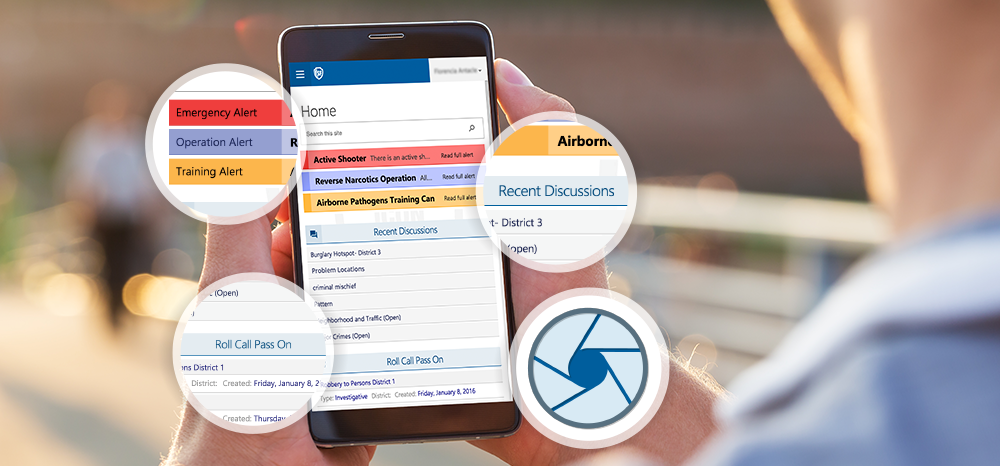 Smartphones are being handed out to officers to enable them to work smarter and safer while policing our streets. Using smartphone technology is not new but the issue of departments lacking a strategy for implementation is widespread. Pilot programs are long over and yet officers and departments are not aware of the full capabilities of smartphones. Consider these elements as smartphones strategies are revamped in police departments.
Smartphones are being handed out to officers to enable them to work smarter and safer while policing our streets. Using smartphone technology is not new but the issue of departments lacking a strategy for implementation is widespread. Pilot programs are long over and yet officers and departments are not aware of the full capabilities of smartphones. Consider these elements as smartphones strategies are revamped in police departments.
1. Improve Communication and Officer Safety with Life-saving Apps.
Smartphone applications, such as those through SmartForce™, connect public safety agencies internally and to the community at large. Applications can make it easier and faster for officers on the streets to get the information that they need. The New York Times wrote on the smartphone initiative in Harlem. Officer Tom Donaldson was able to type in a street address in a housing project and pull up names of every resident with an open warrant, arrest record and police summons, apartments with prior domestic incident reports, residents with applicable orders of protection, registered gun owners, and arrest photographs of all parolees in the building. This information will provide valuable intelligence and will help officers be more prepared when dealing with subjects on a daily basis. Detailed SmartForce™ apps offers higher-level intelligence to agencies that is user-friendly and potentially life-saving.
2. Enable Roll-Call Pass-On.
One of the first features to be made available within the SmartForce™ Agency Management System, is used to improve internal communications, such as sharing vital information to the team (Bulletins and be on the lookout, photos and video) in memorable ways, assigning accountability for activities, and spending more time on decision-making and tactical strategy during meetings. All of these electronic entries are searchable and can be filtered for robust reporting.
3. Focus on Agency and Community Collaboration.
An Agency Management System (AMS), is a secure environment created to foster a real-time, two-way culture of information exchange within the department and with the community at large. Possible ways to implement AMS include:
- Scheduling meetings in real-time to enable community programs to benefit from the increased speed of secure information sharing.
- Establishing secure collaboration sites with key organizations, such as businesses, schools, mental health facilities, HOA’s and other local law enforcement agencies.
- Collaborating with leaders, business owners and officers.
- Sharing success both internally and to the public.
There is a huge push towards information-sharing with the public and SmartForce™ complements local crime enforcement efforts. Providing officers with a secure platform to contribute within a collaborative communication platform can be a major factor in achieving up to a 25% increase in productivity and engagement. Departments control the type and level of information-sharing available on the SmartForce™ Agency Management System.
4. Help with Body Worn Camera Programs.
An AMS system helps departments implement the Body Worn Camera Program with a streamlined management system of policy drafting, submissions, auditing, and reports. SmartForce™ is capable of including video evidence and uses temporal sequencing technology to record events in a Use of Force report. It highlights effective responses and de-escalation techniques used during an incident. In addition, citizen complaint tracking, training management, video storage, open records requests, and Public Information Officers are supported with the software solution presented by SmartForce™.
Smartphones and a tailored SmartForce™ AMS system enable collaboration and compliance within the department and outreach to communities. Find out more about a FREE trial at www.adventos.com.









